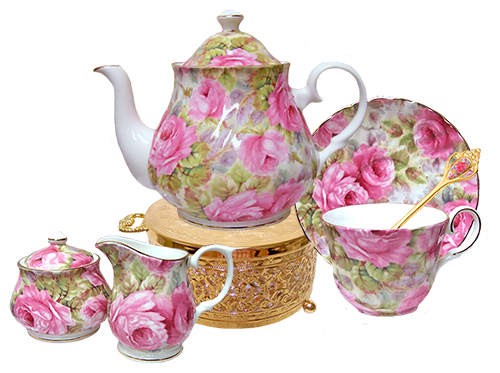Teapots
What are Chintz Teapots?
Chintz Teapots
A Chintz teapot is a wonderful way to bring your garden into your home. Many lovers of country living adore this pattern of teapots. Chintz is actually a small repeating pattern usually of flowers covering a teapot and other pieces of tea ware. Many different manufacturers produce these lovely teapots and tea ware in a long list of pattern names. Chintz patterns are available on porcelain or bone china teapots. But the bone china, particularly from England and Heirloom are more sought after by collectors.
A Little History
In the 1700’s chintz , a colorful cotton fabric made in India, printed with exotic flowers and birds, was very fashionable in Europe. In the 1800’s decorative printing techniques improved and potters began producing creations that were inspired by these fabric patterns.
Then in 1913 Grimwades became the first pottery in the 20th century to produce chintz patterns. These early designs were of large and widely spaced flowers. Grimwades “Marguerite” in 1928 is considered the first modern chintz pattern as it consisted of small and densely packed flowers. Proceeding that and starting in 1930, every year at the British Industries Fair, Royal Winton introduced several new chintz patterns.They were received well and large amounts were exported to North America, Australia and New Zealand. At the same time other companies such as Lord Nelson Ware, (Elijah Cotton) and James Kent began producing patterns to compete with Grimwades. In 1940 World War II had a devastating effect on the production of decorative goods by greatly reducing them to better concentrate on the war effort. In 1950, the demand by consumers of the return of pretty things greatly boosted sales and Royal Winton introduced fifteen new patterns this year. In the 1960’s the taste of the buying public turned to American and Scandinavian decor and the chintz pattern died out.
Most vintage pieces collected were produced from 1920 to 1960. However, happily the Chintz pattern has made a successful return and is very valued and collectible by teapot enthusiasts.

